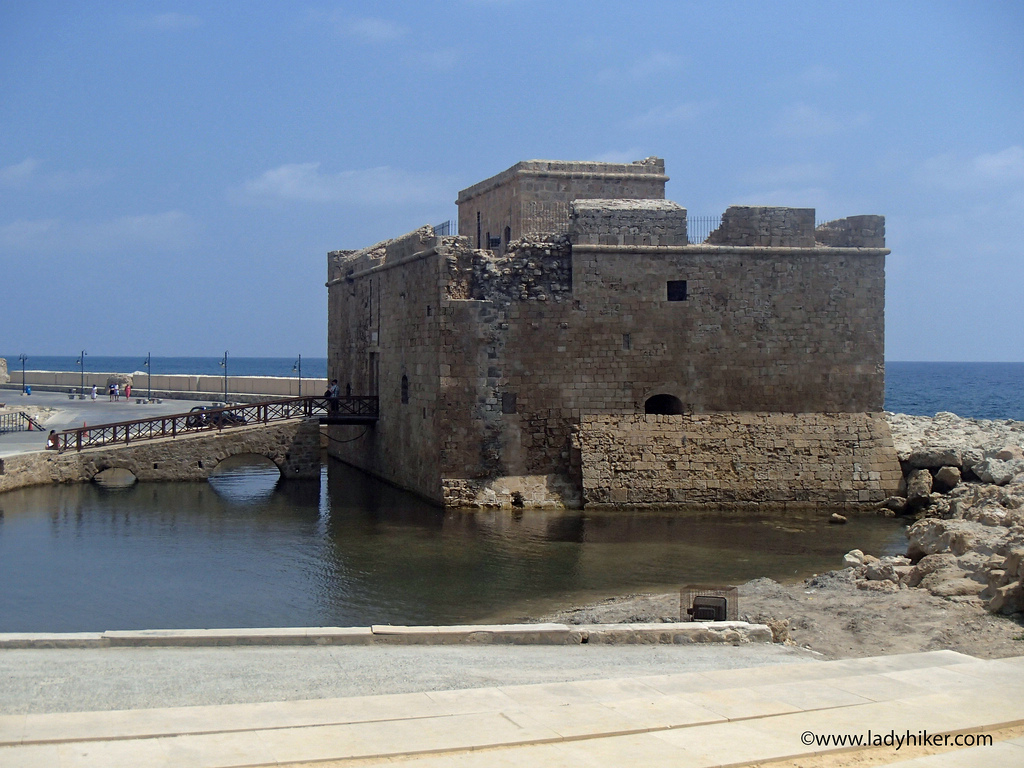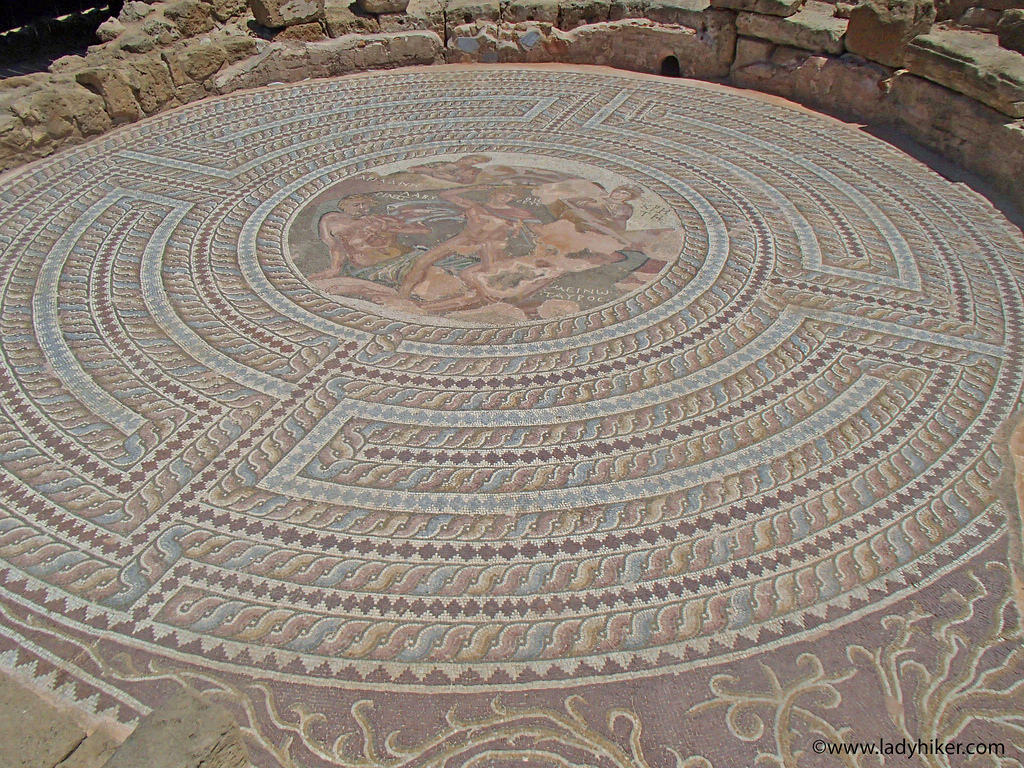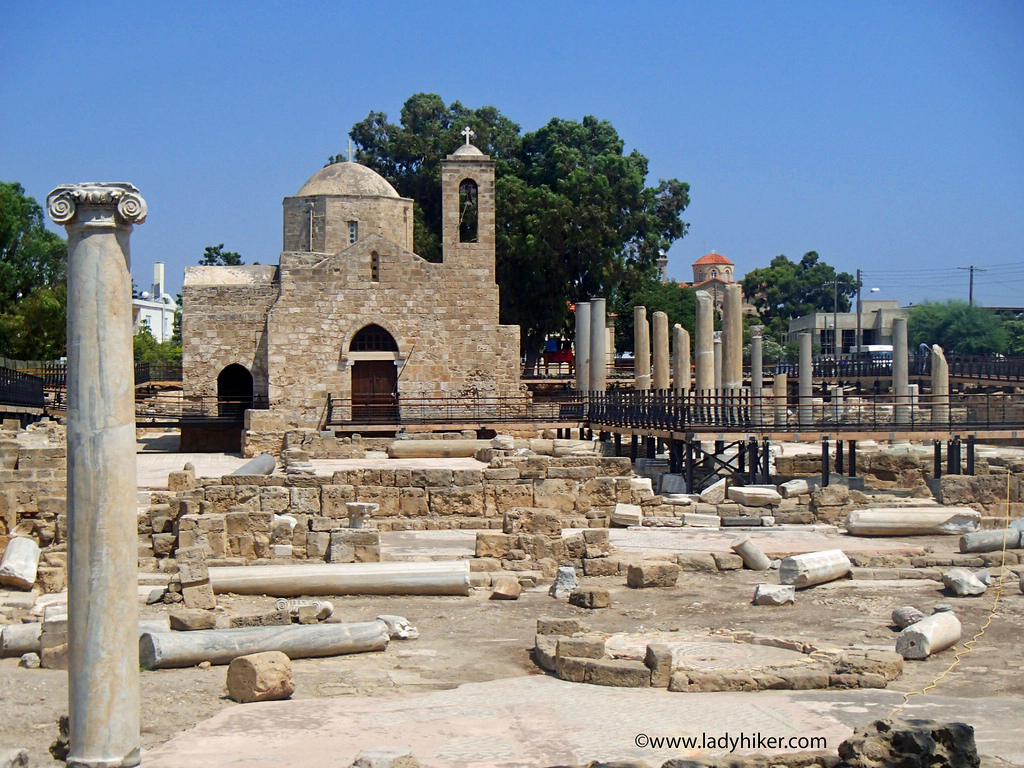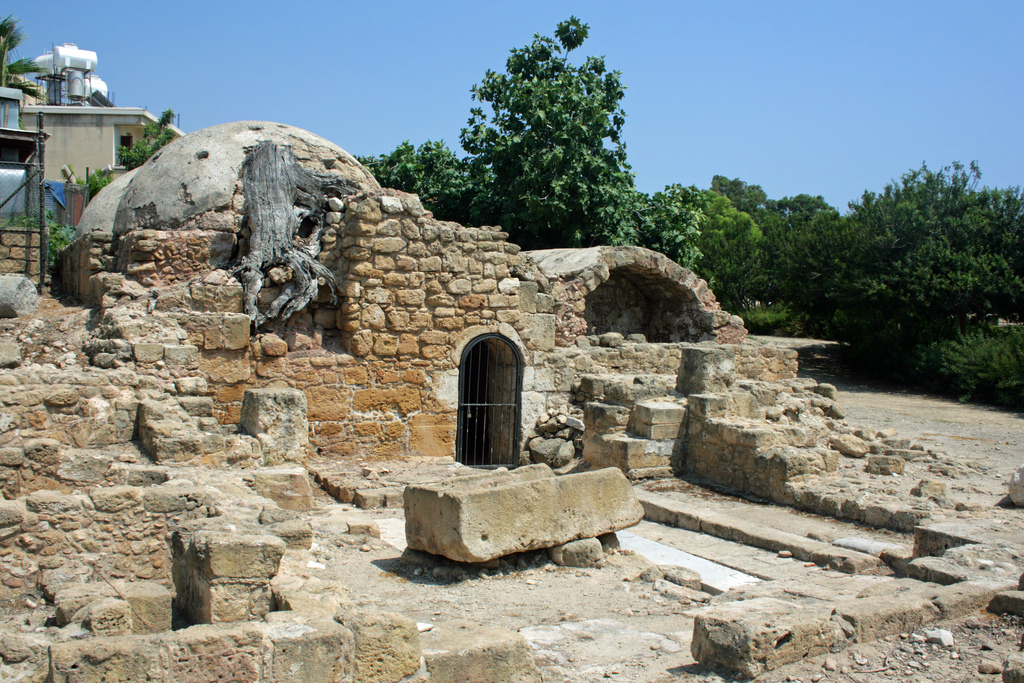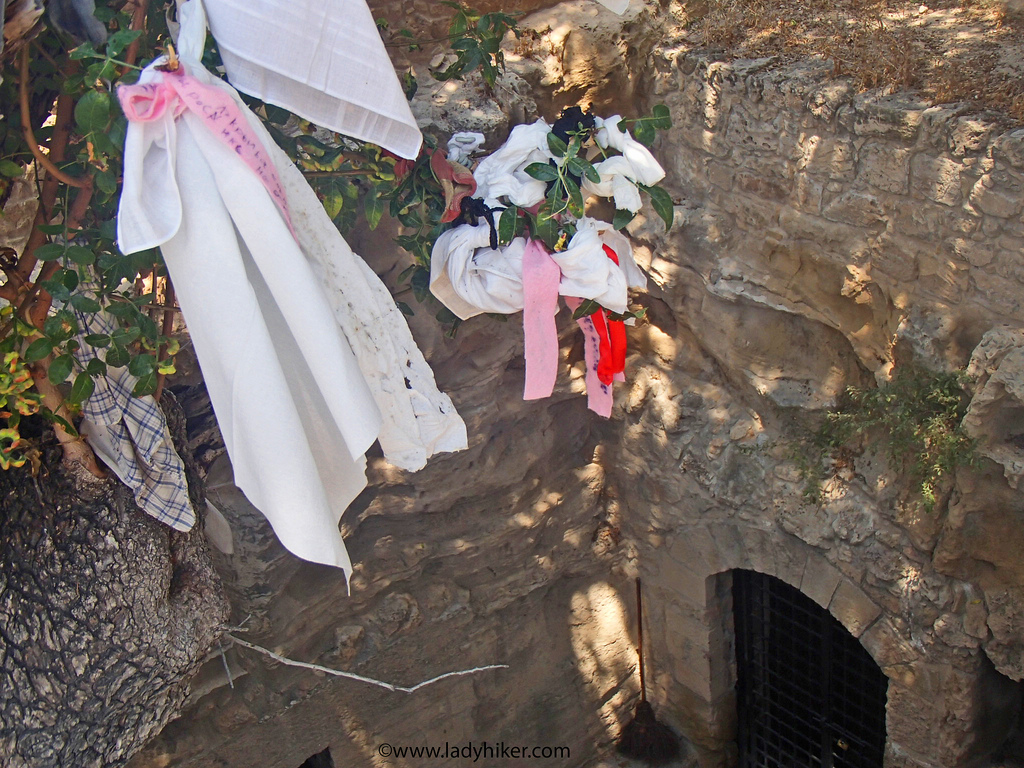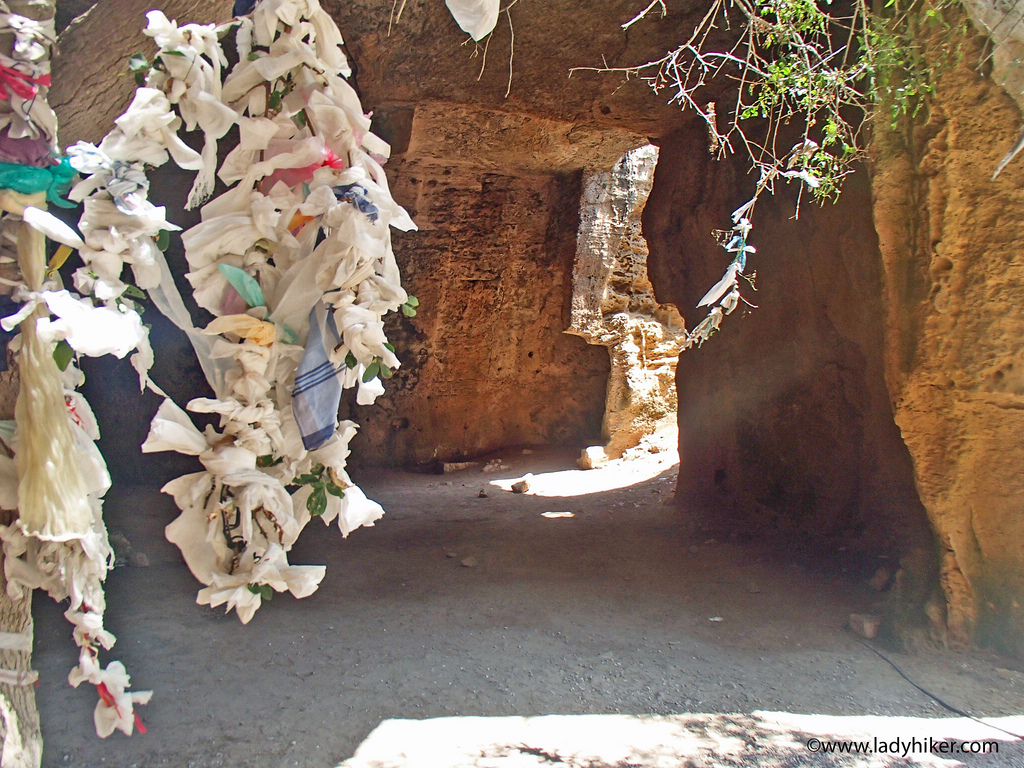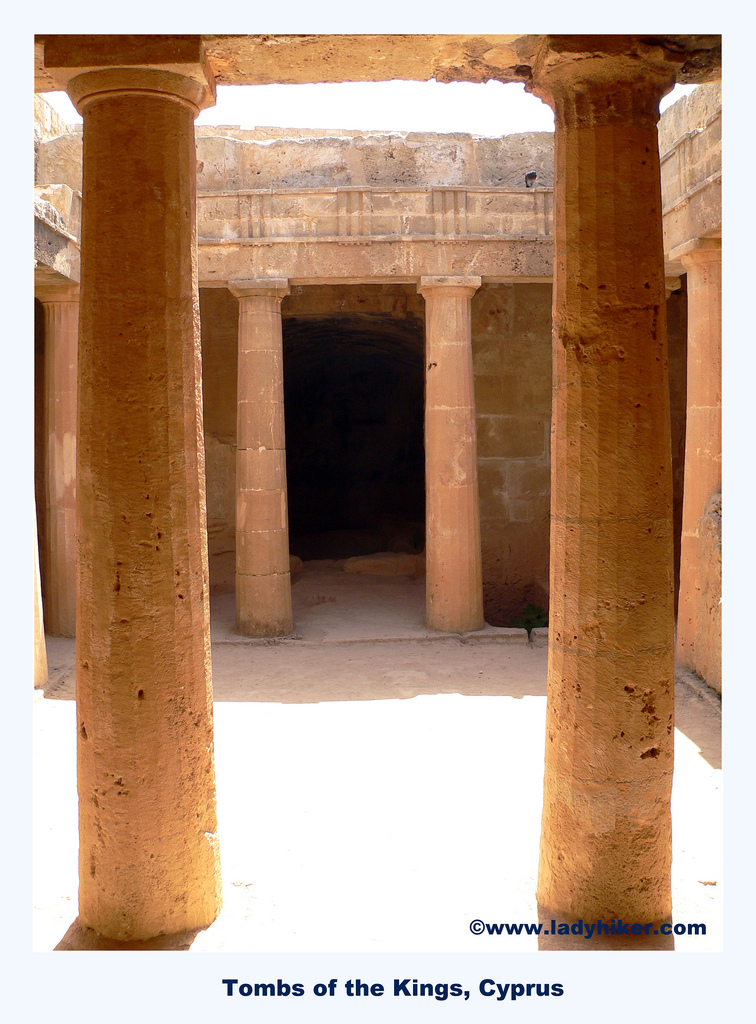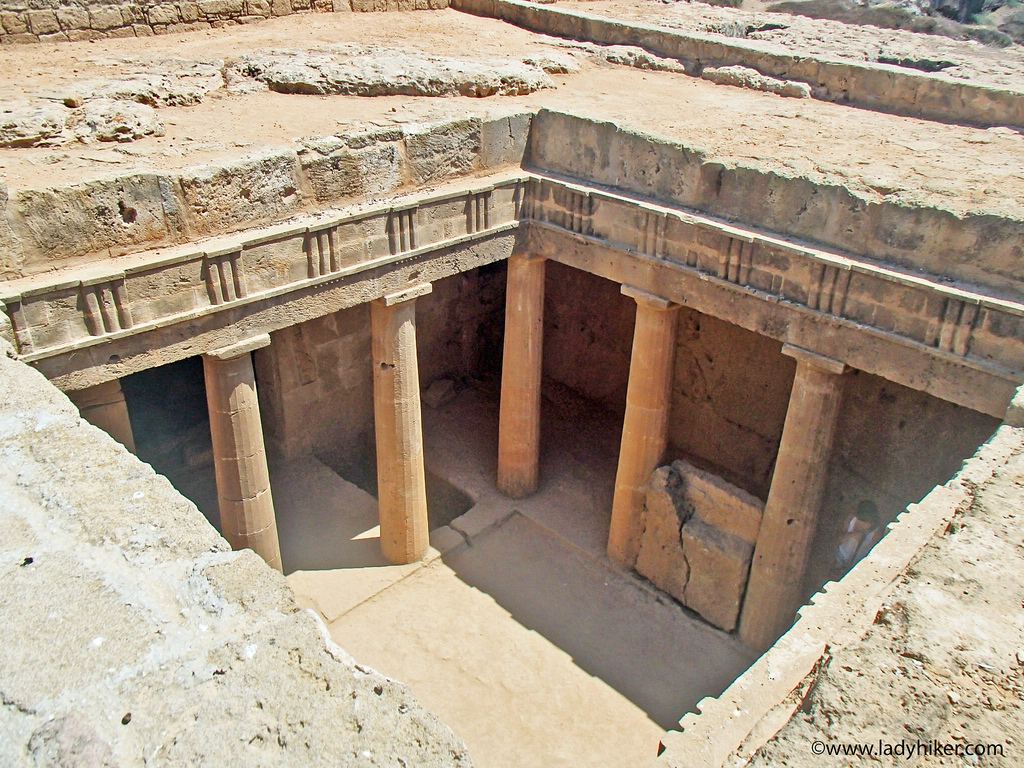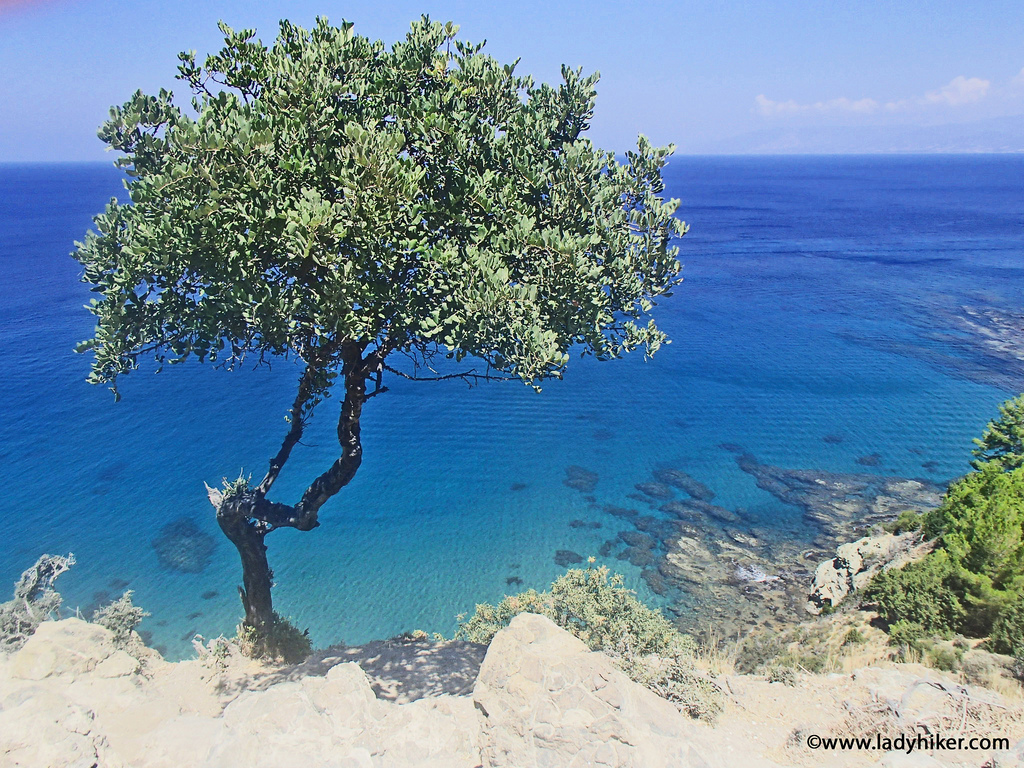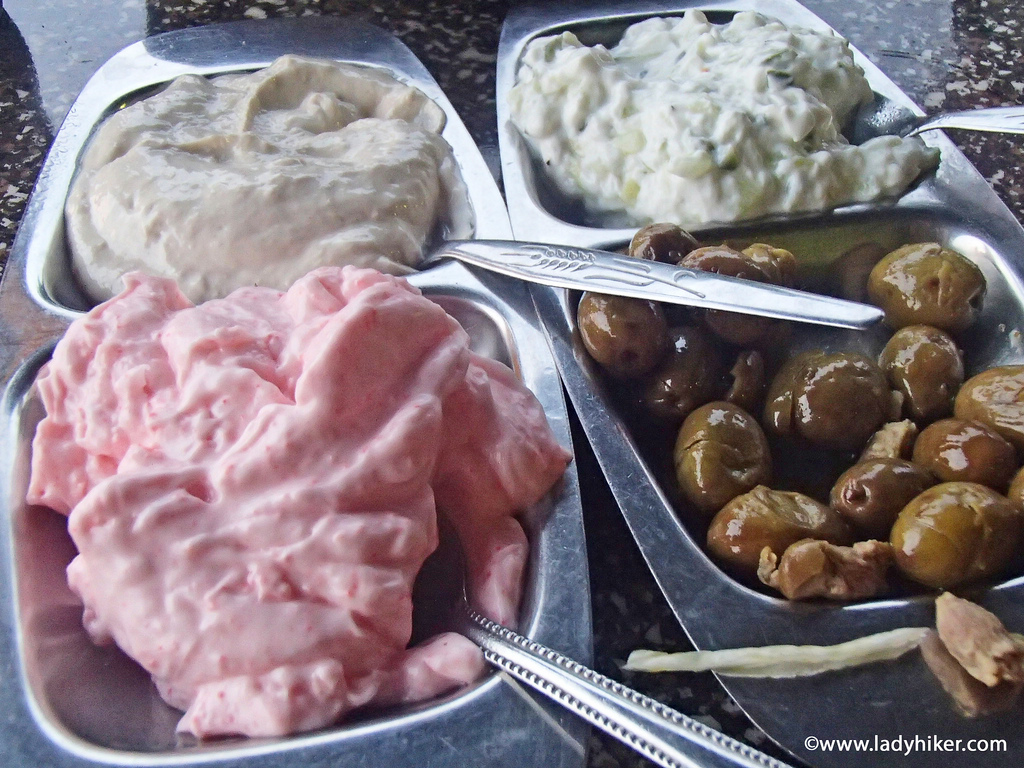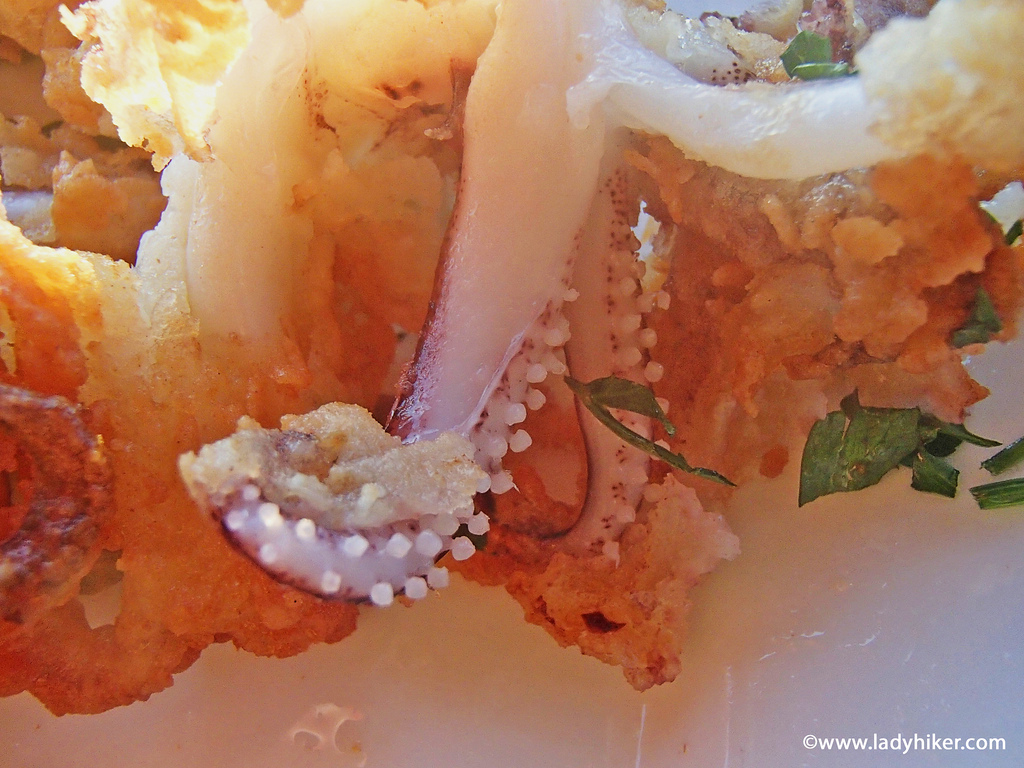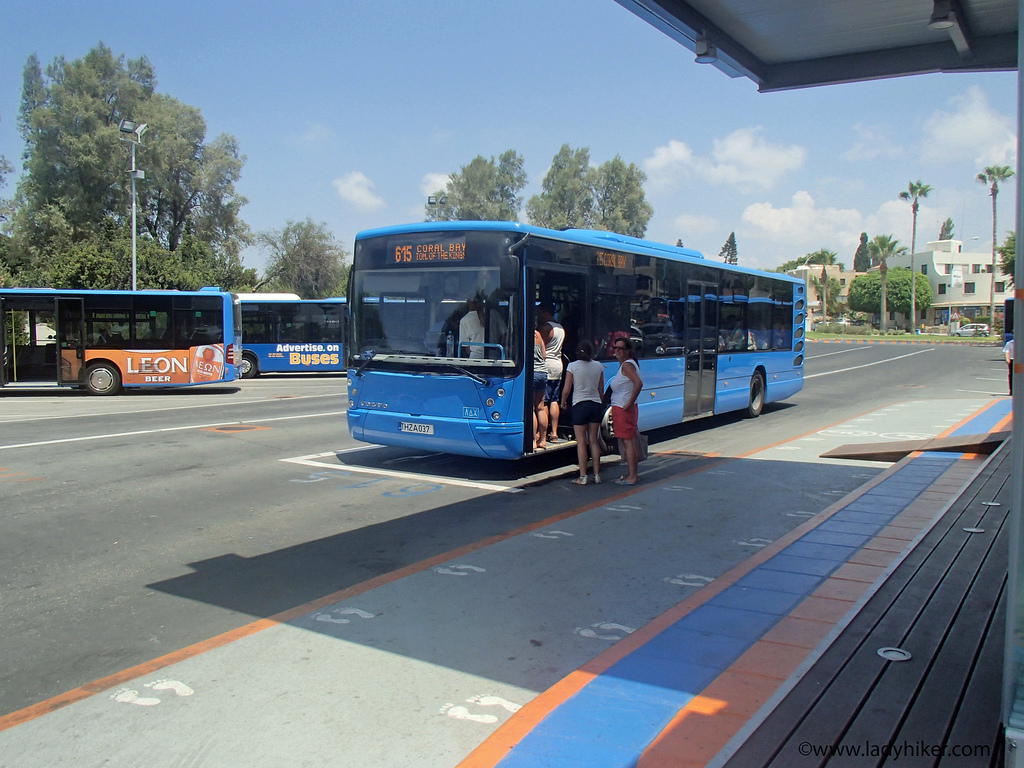JM – When Karen Guttridge from Ladyhiker approached me about writing a guest post about Cyprus, I asked if you could cover the whole island in a weekend. She assured me that even in the town of Paphos there was enough to enjoy a sun-soaked weekend of great Mediterranean food, scenic hiking and history.
I first visited Paphos on a whim shortly after celebrating the millennium and spent most of my visit shuffling between a beach sun lounger and the string of tavernas lining the coast whilst remaining completely unaware of what lay beyond. Several years later I was the proud (if slightly rash) owner of a property and now spend several months here each year masquerading as a writer in the long, welcome stretch of sunshine from March to December. Two things struck me;
- The abundance of ancient history around every corner – don’t be surprised to step out of a modern store and shortly afterwards stumble upon genuine Roman columns and ancient burial chambers.
- The chance to sunbathe and snow ski on the same day. Where else can you be whizzing down a mountain ski slope in the morning and then head off down to the coast for a spot of sunbathing on the beach in the afternoon?
Paphos has been inhabited since the Neolithic period and lies in the South West of the island of Cyprus in the Eastern Mediterranean Sea. The island lies west of Syria and east of Greece with Turkey to the north and Egypt to the south.
Things to See and Do
Walking around Paphos is like stepping into a museum; UNESCO simply sighed and added the whole town to its World Cultural Heritage List. In true Mediterranean style, many ancient monuments and astonishingly well-preserved artefacts were discovered by chance by farmers working the land.
A morning in Kato Paphos
The area of Kato (lower) Paphos, by the sea, is built around the medieval port and contains most of the luxury hotels and is the entertainment hub of the town. A large car park and adjacent bus station make for easy access to this part of town.  Most of the sites of interest here are all within 5-10 minutes walk of each other and entry is often free of charge.
Paphos Fort
The 13th century medieval fort is located at the end of the harbour. There is nothing much to see inside but as the entrance fee is so reasonable it’s worth delving inside and taking the stairs to the roof for some great views of the harbour area.
Nowadays, the fort is the magnificent venue for the Paphos Aphrodite Festival– an opera held every summer.
Operating Hours:
Daily: 08:00 – 17:00 (November – March)
Daily: 08:00 – 18:00 (April – October)
Daily: 08:00 – 19:30 (June – August)
Operating Period:Â All year round
Entrance Fee: €1.70
Paphos Mosaics
Just a few minutes walk from the fort is the entrance to the archaeological park which houses some of the best Roman mosaics in the Mediterranean. Dating from the 3rd to the 5th century AD, they were discovered by a farmer in 1962 while farming his land. History fans will love this place – there are plaques which give a brief description of the content of the mosaics but if you’re interested in detailed information then it’s worth spending a few euros on a guidebook at the entrance gate.
The scenes are mainly from Greek mythology depicting hunting and wild animals such as tigers, wild boars, wild goats etc. There are also five houses which together would have formed a Roman nobleman’s villa. These are the Houses of Dionysos, Theseus, Aion, Orpheus and Four Seasons.Â
Operating hours:
Daily:Â 08.00 – 17.00 (November – March)
Daily:Â 08.00 – 18.00 (April – May, September – October)
Daily:Â 08.00 – 19.30 (June – August)
Operating Period: All year round
Entrance fee: €3.40
Also within the park is the remains of the Saranda Kolones Byzantine castle. Its name means “40 columns†referring to the number of granite columns found in the ruins. Try counting them to check! Don’t forget your camera as the arches and columns backed by the sea make for some great shots.
As with most sightseeing in Paphos there is very little shade so be sure to wear plenty of sunscreen plus a hat and take lots of water.
St Paul’s Pillar   Â
Just across the road from the mosaics is St Paul’s Pillar. It is widely believed that this is where the apostle was tied in 45 AD and given 39 lashes before he finally converted the Roman governor Sergius Paulus to Christianity.
This plaque is also close by and marks the spot where the king of Denmark died on his way to the Holy land in 1103.
Next to St Paul’s Pillar is the remains of the Frankish baths – one of the few Frankish buildings that has survived earthquakes and Turkish rule in Cyprus.
Agia Solomonis Catacombs
A 5 minute stroll along the nearby Leoforos Apostolou Pavlou road lies the Agia Solomoni Catacomb Church. This tomb complex is the final resting place of the seven local Machabee Brothers, who were martyred and buried here roughly 2,200 years ago.Â
The site is small and low key so just a pay a brief visit. At the entrance to the tombs is a huge terebinth tree covered with knotted handkerchiefs and rags as offerings from the faithful. Legend has it that anyone who fastens a piece of his or her clothing to the branches of the tree is cured of chronic illness.
Open: Daily
Admission: Free
Agios Lambrianos Rock-Cut Tomb
Next to the catacombs are two huge underground caves, believed to date from the beginning of the Hellenistic period and a former place of Christian worship.
Just a brief peek inside will suffice and again there is a well-draped terebinth tree marking the entrance. Open daily and admission: free
Tombs of the Kings
A 30 minute walk or 5-10 minute bus ride from the harbour area is the impressive underground Tombs of the Kings, carved out of solid rock and dating back to the 4th century BC. The name is misleading as the tombs contain the remains of Paphos VIPs and not royalty but this doesn’t detract from the overall impression.
Eight tomb complexes are highlighted by numbers and invite a visit. Wander freely through the caves and pillars but watch out for steep drops!
The bodies would have been buried with gifts, ornaments and jewellery but the tombs have been looted extensively over the years. Any finds are now exhibited in the Paphos Archaeological Museum.
Operating hours:
Daily:Â 08.00 – 17.00 (November – March)
Daily:Â 08.00 – 18.00 (April – May, September – October)
Daily:Â 08.00 – 19.30 (June – August)
Operating period: All year round
Entrance fee: €1.70
Aphrodite’s Baths
Around 45-60 minutes drive from Paphos centre is the undeveloped, natural beauty of The Akamas peninsula. This is a great spot for hiking with several well-marked trails. Two such trails start from the Baths of Aphrodite, a crystal clear pool and bubbling spring where legend has it that Aphrodite the Greek goddess of love used to bathe. There is free parking, a restaurant and entry is free of charge.
Both the Aphrodite Trail and the Adonis Trail are around 8km in length and will take around 3-4 hours to complete (with stops). You’ll also need to be fairly fit and sure footed to cope with the occasional steep climbs and hairy descents! If hiking is not your bag then do just stroll the first 10-15 minutes into the Aphrodite Trail for some fabulous photo opportunities along the coastline.
Note: Although it is possible to travel by bus from Paphos to Aphrodite’s Baths the journey is not direct and requires a change. My advice would be to visit the Akamas region if you plan to hire a car for the duration of your stay in Paphos.
However, if you’re still keen to follow Aphrodite then instead take a 45 minute bus ride east from Paphos to Petra Tou Romiou better known as Aphrodite’s Rock, the mythical birthplace of the goddess.
Apparently, if you swim naked around the rock 3 times at midnight you will emerge ten years younger! Â The beach is largely shingle with strong sea currents.
Food and Drink
A good way to experience a whole range of Cypriot dishes in one meal is by ordering a Meze. This selection of local dishes ranges from delicious dips such as taramasalata, tzatziki and houmous to vegetables and a variety of fish and meats.
Try loukanika the spicy local sausage and souvlakia, Cypriot kebabs. Other dishes include tasty, slow cooked meat stews such as stifado (beef), afelia (pork) and kleftiko (lamb) and do sample halloumi the famous grilled cheese. Calamari (squid) is popular as are dolmades – vine leaves usually stuffed with minced beef, rice and various spices.
Make sure you’re hungry – a traditional Cypriot meze can comprise of up to 30 dishes and just keeps coming until you beg them to stop! Expect to pay somewhere in the region of €15.00 to €20.00.Â
The quality of food in Paphos is excellent and almost every cuisine imaginable is available with vegetarians being well catered for too.
Beer, Bars and Pubs
The local beer is Keo and a pint costs around €2.50, depending on venue. For a lively night out head for Bar Street with its string of pubs and snack bars.
Some very good local wines are available including Agios Onoufrios (dry red) and Vasilikon (dry white).  Local stores charge around €5 per bottle.
How to get there
Cyprus has two airports – Larnaca on the Eastern side and Paphos in the West. Paphos is served by British Airways, KLM, Thomson, easyJet, Jet2 and Monarch. Buses run hourly from Paphos airport into the centre of Paphos and the journey is approximately 40 minutes.
A bit of orientation
Here’s a handy map laying out all the sights mentioned above to give you an idea of where things are in Paphos. Click on the markers to see the sight listed and zoom and pan around to see more of the map.
View 48 hours in Paphos in a larger map
Get around in Paphos
Taking the bus is a convenient method of getting around, and it is certainly inexpensive. Buses from the station usually run every 10, 15 and 30 minutes.
A one way ticket during the day costs €1 and a daily ticket (unlimited journeys) costs €3 (valid until 2300hr). A night-time ticket one way is €2.50. Visit Cyprus By Bus for information on public transport http://www.cyprusbybus.com/
Where to Stay
There is a wide choice of accommodation within walking distance of the harbour to suit most budgets. For keener budgets I have heard positive reviews of The Agapinor Hotel http://www.agapinorhotel.com.cy/ which is just a short bus ride from the harbour. Also check Hostel Bookers http://www.hostelbookers.com
Budget
The currency in Cyprus is the Euro. Accommodation and meal prices vary widely depending on hotel/restaurant but the cost of getting around and entry to most sites of interest is very reasonable. A couple of euros will cover a pitta bread/sandwich snack and a local beer costs from  €2. A single trip bus journey costs €1.
Conclusion
Cyprus offers an exotic mix of sights, tastes and experiences by virtue of its position at the crossroads of Europe, Africa, and the Middle East. On occasion, I’ve asked several visitors to Paphos  why they chose to visit and the three top responses are: The history, the guaranteed sunshine and the spring and autumn hiking opportunities with abundant flora and fauna. Additionally, ease of movement around Paphos is good. Traffic problems are a rarity thus offering the possibility to pack lots into a relatively short stay!
